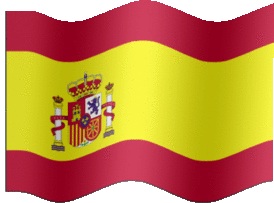Want to know the history behind the Spanish flag? Did you know every color and symbol on the flag represents an important aspect of the history and identity of Spain? Read all about it in our information guide to the Spanish flag.
Did you know that the study of flags is called Vexillology? Flags represent the culture and history of the nation. They can be easily called the mirrors of any specific nation. They showcase what is important to the nation and thus, can help in tracing out the historical backgrounds of the nations.
The Spanish flag stands out among others as it boasts of a rich culture and historical background. The Spanish flag really takes one down the lane in the past when kingdoms prevailed and kings and queens ruled.
Description of Spanish Flag
The Spanish flag has evolved over many centuries. The current Spanish flag was adopted on 19th December, 1981. The flag is divided into three horizontal stripes. Red colored stripes sandwich the yellow stripe which is twice the size of red stripes. Spanish coat of arms is placed at 1/3 the length of flag and is placed towards the hoist. This flag is used as the state and war flags, but the civil flag can be used even without the Spanish coat of arms.
History
The Spanish flag underwent changes from time to time but they were mostly concentrated on the change of coat of arms. The colours and the stripes have remained the same from 18th century onwards; however, there were instances of changing them a few times in the past.
The current coat of arms is much simpler than the previous coat of arms and it depicts a long Spanish history. The four quadrants represent four kingdoms. These kingdoms had merged at that time to give birth to a United Kingdom of Spain near the end of the 15th century.
The four kingdoms represented in the four quadrants are as follows:
Castle: Castle represents the kingdom of Castile.
Lion: The lion represents the kingdom of Leon.
Red/yellow stripes: Four red and five yellow alternating and vertical stripes represent the kingdom of Aragon.
Linked Chains: The linked chains represent the kingdom of Navarre.
The other symbols of the coat of arms are as follows:
Pomegranate fruit: The pomegranate fruit shown in the bottom of the coat of arms represents the Moorish kingdom of Granada.
Two columns: The two columns represent the Pillars of Hercules, showing Gibraltar and Cueta. They have “plus ultra” written across them meaning “further beyond” in Latin. This shows the Spanish discovery of America and its colonization. At one time, there was “non plus ultra” written across the pillars which showed the limited discovered land area. After Columbus discovered America, it was changed to plus ultra.
Protocol
The Spanish give strict protocol to their flag. The flag is hoisted from sunrise till sunset and is hoisted at a prominent place. It is kept in perfect condition and is not allowed to touch the ground. The Spanish give due respect to their flag as it is a symbol of pride for the nation as it depicts their rich culture and heritage.





